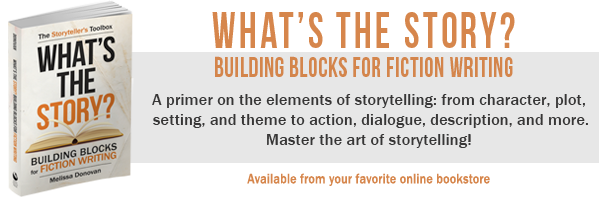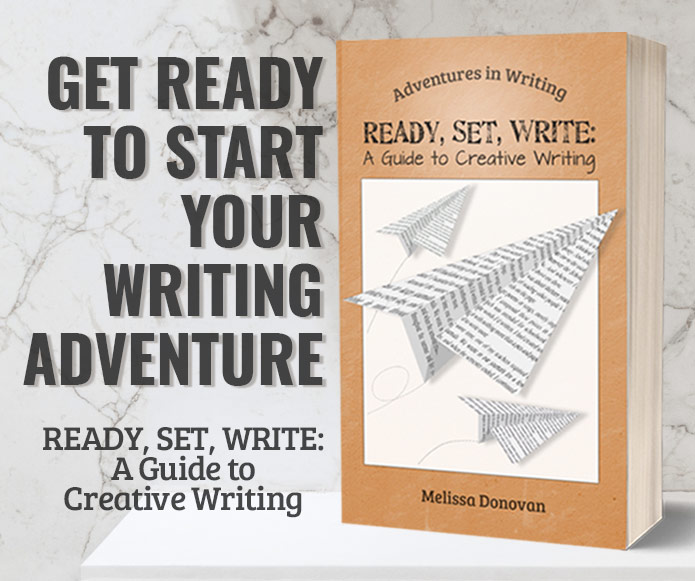Today’s post is an excerpt from my book, What’s the Story? Building Blocks for Fiction Writing. This is from chapter one, “Characters.” Enjoy!
Creating Characters
We see ourselves in a story’s characters. We see people we know—people we love, people we hate, people we fear, people we admire, and people we want to emulate.
We love characters, loathe them, judge them, take their sides, or stand in opposition to them. We cheer them on or boo them. We celebrate them, and sometimes we mourn them. We form relationships with them, even though they’re just figments of some storyteller’s imagination.
Characters are the heart and soul of a story. We care about a story only to the extent that we care about its characters. In order for us to connect with characters, they need to do more than move the plot forward. Characters require depth and complexity. Who are these characters? What do they want? Why do they want it? What’s standing in their way? Realistic characters come with all the flaws, quirks, and baggage that real people possess. They’re not just names on a page; they have pasts and personalities, and each one is unique.
Perhaps most importantly, characters must fit purposefully into the stories they inhabit.
Creating Characters with Purpose
Ideally, every character plays a critical role, with each performing a function that is necessary to the story. When every character is essential, a story becomes tighter, more cohesive, and more compelling. Whether characters appear frequently or occasionally, each one must make a meaningful contribution to the story. In looking over a cast of characters, we should be able to pinpoint each one’s purpose to the story.
A character arc is a path of transformation. The story’s events reshape the character’s behavior, personality, worldview, or lifestyle, causing the character to change.
Most character arcs involve growth; characters undergo positive development over the course of the story and end up wiser, stronger, or better off in some meaningful way. Harry Potter starts out as an awkward, lonely orphan who is mistreated by his aunt, uncle, and cousin. But he emerges as a great and powerful wizard. Yet it’s not wizardry that makes Harry Potter great and powerful. It’s the commitment, courage, and kindness that he develops throughout the course of the story. The choices he makes through every step of his journey determine the course of his character’s evolution.
However, an arc can take a negative trajectory, in which case a character worsens over time. For example, a character who is good turns bad. An example would be Anakin Skywalker’s journey toward becoming Darth Vader in the Star Wars franchise.
Character arcs primarily affect the protagonist, but other characters can undergo transformation too, making a story more dynamic.
Tips for Creating Dynamic Characters
- Dialogue and behavior. From the way they talk to how they behave, each character should be distinct. Make sure characters don’t sound and act alike.
- Names. Esmeralda doesn’t sound like a soccer mom, and Joe doesn’t sound like an evil sorcerer. Make sure the names you choose for your characters match their personalities and the roles they play in the story. This will make them more memorable.
- Goals. Some say that characters’ goals drive the entire story. He wants to slay the dragon; she wants to overthrow the evil empire. Goals can be small (the character wants a new car) or big (the character is trying to save the world). Just about every character in a story has a goal.
- Strengths and weaknesses. Villains sometimes do nice things, and heroes occasionally take the low road. What are your characters’ most positive and negative behaviors and personality traits?
- Friends and family. These are the people in our inner circles, and they play important roles in shaping our personalities and our lives. Who are your characters’ friends and family before the story starts? What new friends will they meet once the story begins?
- Nemesis. A nemesis is someone with whom we are at odds. This character doesn’t have to be a villain, but the goals of the nemesis definitely interfere with your main character’s goals.
- Position in the world. What do your characters do for a living? What are their daily lives like? Where do they live? What is a character’s role or position among their friends, family, or coworkers?
- Skills and abilities. Characters’ skills and abilities can get them out of a tight spot or prevent them from being able to get out of a tight spot. What skills and training do your characters have? What skills and training do they lack? Will they acquire those skills?
- Purpose and function. Can you identify a purpose for every character in a story? Do some characters perform one function while others perform multiple functions?
- Fears. An old fiction writing trick is to figure out what your character is most afraid of, and then make the character face it. Give each character a fear, even if they never face it in the story.
To get more insight on creating characters, pick up a copy of What’s the Story? Building Blocks for Fiction Writing.






Melissa, this is the amazing article! I can really call it an ultimate guide to creating characters that resonate. Characters are very important, and it doesn’t matter whether readers hate them or love them. The worst thing is when readers do not care about them. So, my favorite tip is ‘Strengths and weaknesses’, for I am sure that the most successful characters are usually the most controversial ones.
Hi Irene! Yes, strengths and weaknesses are defining features of characters — very important traits. Glad you enjoyed this article!
I grew up in the 50s, which included the Superman television show. Every kid in our neighborhood had a cape and pretended to fly. We knew that Superman was a show and not real. Today, these kids actually think they are real superheroes thanks to their trophy-awarding parents. Characters are a huge piece of the story, but sometimes the story is told using them as part of it, not being the main part of the story.
I’ve never met a kid who thinks they are a real superhero. Every generation has produced spoiled individuals.